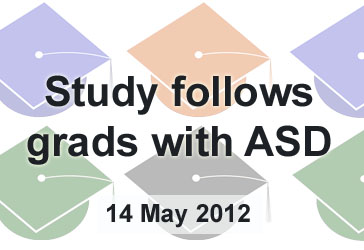Archives
May, 2012
Select a different month in the archive
Effectiveness of Sensory Integration Therapy Unknown
By Catherine Croft Swanwick, Ph.D. on May 28, 2012

Background: Sensory-based therapies are increasingly used for neurodevelopmental disorders such as autism, but the American Academy of Pediatrics now cautions parents about the lack of research regarding their effectiveness. Many autistic children are overly sensitive to sensory input (i.e., sound, light, touch). Sensory–based therapies aim to help them cope with these sensitivities in daily life.
What’s New: The lack of data about sensory integration therapy spurred the council of pediatricians to make three main recommendations, summarized here:
- At this time, pediatricians should not use sensory processing disorder as a diagnosis. Instead, when sensory symptoms are present, other neurodevelopmental disorders should be considered.
- Pediatricians should recognize and communicate with families about the limited data on the use of sensory-based therapies for childhood developmental and behavioral problems.
- Pediatricians can teach families to evaluate the effectiveness of sensory-based therapies, such as with trial periods and monitoring techniques.
Why It’s Important: Although sensory-based therapy may be acceptable as one component of a comprehensive treatment plan, parents and pediatricians should closely monitor its effects.
Help me understand :
| Source(s) : |
| Tweet |
Poor Transitions for High School Graduates with Autism
By Catherine Croft Swanwick, Ph.D. on May 14, 2012

Background: Youth diagnosed with Autism Spectrum Disorders (ASD) are at high risk for unemployment and lack of post secondary education, according to a national study published recently in the journal Pediatrics. In the largest study of its kind yet, scientists analyzed outcomes for ASD youth using data generated from the National Longitudinal Transition Study 2 (NLTS2), a 10-year prospective study of youth receiving special education services conducted by SRI International for the U.S. Department of Education.
What’s New: In the six years immediately following high school, only 34.7% of youth with ASD had attended college and merely 55.1% had held paid employment. ASD youth with higher functional ability showed better outcomes, as did those from higher income families. However, overall the ASD youth exhibited significantly lower percentages than youth with other special needs, such as speech/language impairment (51.0% college, 86.0% employment), learning disability (39.9% college, 93.8% employment), or mental retardation (18.2% college, 68.9% employment).
Why It’s Important: What could be causing these poor outcomes? Signs point to problems with the transitional period after high school. In the first two years following high school, more than half of ASD youth (51.9%) were unemployed and not enrolled in college, whereas this percentage lowered dramatically to 11.1% when ASD youth had exited school at least four years ago. Together, this study recommends improved transition planning for ASD youth before they graduate from high school.
Help me understand :
| Source(s) : |
| Tweet |

